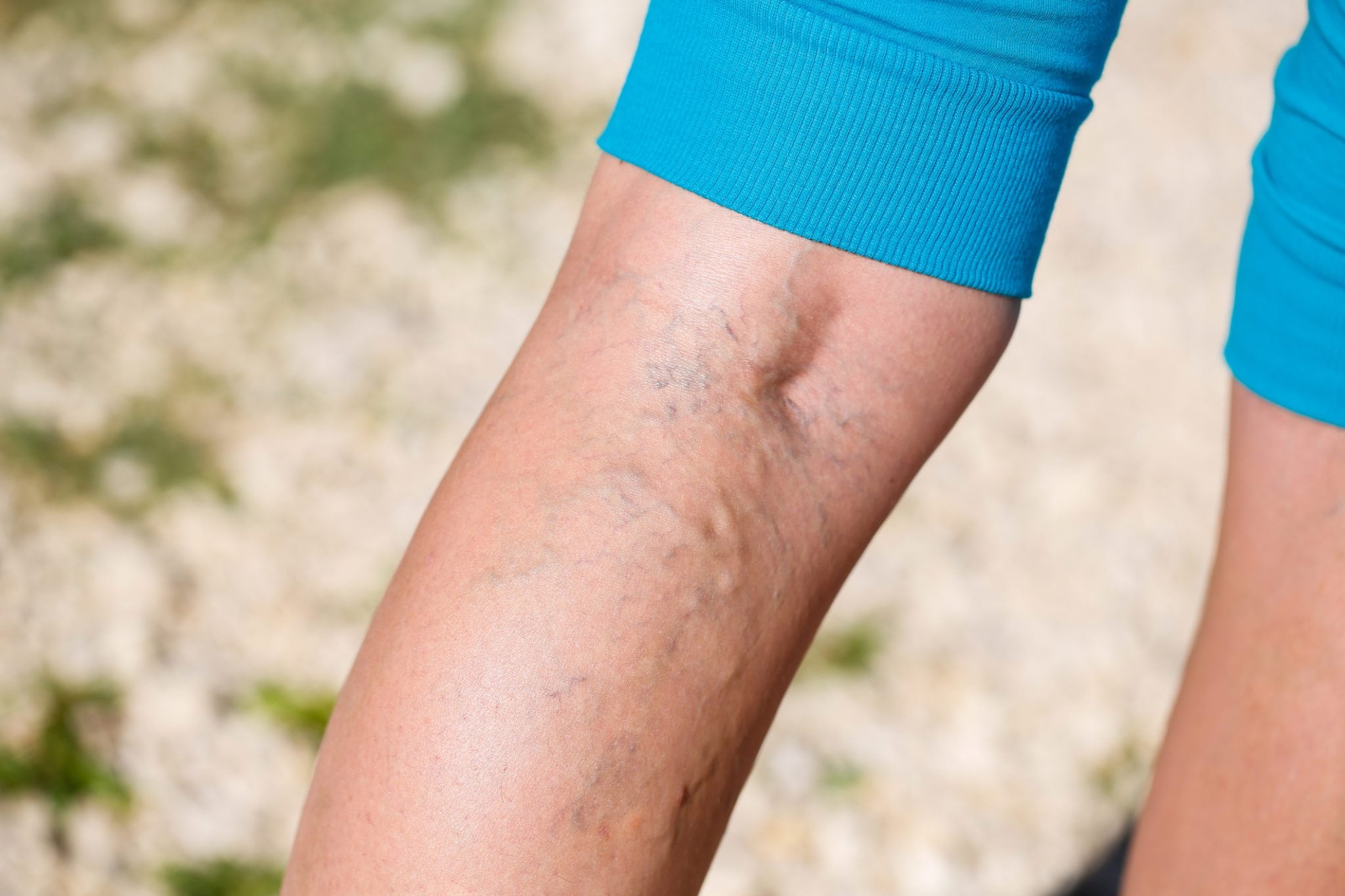<< Back
Varicose Veins Slowing You Down? Signs, Symptoms and Treatment of Venous Disease

February 26, 2021
As we age, many of us begin to notice prominent veins, particularly in our legs. Whether we spend all day standing on the job or have a strong family history of varicose veins, with time these veins extend and spread, like blue or purple lines on a road atlas.
Although these veins may be unsightly, for the most part they do not pose a significant risk to your health. But that doesn’t mean they’re harmless. Vein disease can cause aching, pain, discomfort, limiting our day-to-day life, and occasionally causing more serious problems like a wound or ulcer.
More than 25 million Americans are diagnosed with varicose veins. They are more common in women than men. Pregnancy and obesity can be contributing factors. Family history also plays a role. Although age is a factor as your veins start to wear out, varicose veins can affect young and old people alike.
What Causes Varicose Veins?
Varicose veins are normal veins that become enlarged. As they grow, they start to twist and turn. The veins most commonly affected are in the legs, because standing and walking upright increases the pressure in those veins.
Arteries carry blood from your heart to the rest of your body, and veins return that blood to your heart. The veins in your legs have to work hard to move that blood back up your body to the heart — against gravity. Muscle contractions in your lower legs do the bulk of the work, helping blood return to your heart.
One-way valves in your veins open as blood flows toward your heart and then close to stop blood from flowing backward. If these valves are weak or damaged, blood can flow backward and pool in the vein, with increased pressure causing the vein to become enlarged and painful.
What Are the Symptoms?
The most common symptoms of varicose vein disease:
- Achy legs.
- Swelling, tightness.
- Throbbing, especially at vein.
- Itching.
- Discoloration.
- Pain on standing, sitting.
More rare symptoms include:
- Muscle cramps.
- Pain with walking.
- Spider veins.
- Night cramping.
- Restless legs.
Exercise, elevating your legs or wearing compression stockings can help ease symptoms and may prevent them from getting worse. If your veins aren’t bothering you, rest assured that for the most part these are benign, and don’t need to be treated. But if you feel your veins or vein symptoms are getting worse and self-care measures haven’t improved them, a vascular surgeon may be able to help.
Your doctor will take your medical history, including reviewing your risk factors, occupation, and family history. The doctor will conduct a physical exam, and may do an in-office ultrasound to look for abnormal vein valves, dilated veins and any prior or current clots.
How Are Varicose Veins Treated?
Your doctor will talk with you about your symptoms, and how much they are bothering you and adversely affecting your quality of life. Typically, treatment will start off conservatively, including compression therapy, elevation, medication and exercise.
Compression therapy — usually special socks that you wear — helps to overcome the “faulty” valves and directs blood to deep veins. Elevation simply works to reverse the effects of gravity. Medication like ibuprofen counteracts any inflammation, and exercise increases blood circulation.
If those relatively simple measures don’t alleviate symptoms, or the condition worsens, your doctor has other options, including closing the abnormal vein or removing large varicose veins. Nearly all of these procedures can be done in an office setting.
Ablation Therapy
The most common procedure to treat the source of varicose veins, ablation involves inserting a catheter, and using heat (either radiofrequency or a laser) to close the vein. This decreases pressure in the leg. It’s been used for more than 25 years, is safe and effective but is generally limited to the thigh and the back and top of calf areas.
Sclerosing Therapy
Sclerotherapy uses an irritating solution called a sclerosant, which is injected directly into a vein. The solution irritates the vessel, causing it close down. The benefit of sclerotherapy is that there is no numbing required and the calf area can be treated. The downside is a higher recurrence of varicose veins after treatment. We also use sclerotherapy to treat spider veins. Spider veins are almost always treated cosmetically, with rare exceptions for episodes of bleeding from the small skin veins.
Microphlebectomy (Surgery)
Many patients ask about removal of the large varicose veins as well as shutting down the source. Indeed, removal of the large veins, either at the same time or as a separate procedure, is an important part of comprehensive vein care. T
he procedure to remove these veins is called microphlebectomy. This can be performed easily in the doctor’s office with just local anesthesia. Patients who are able to have microphlebectomy performed at the time of larger vein ablation are less likely to need additional treatments for their veins in the future.